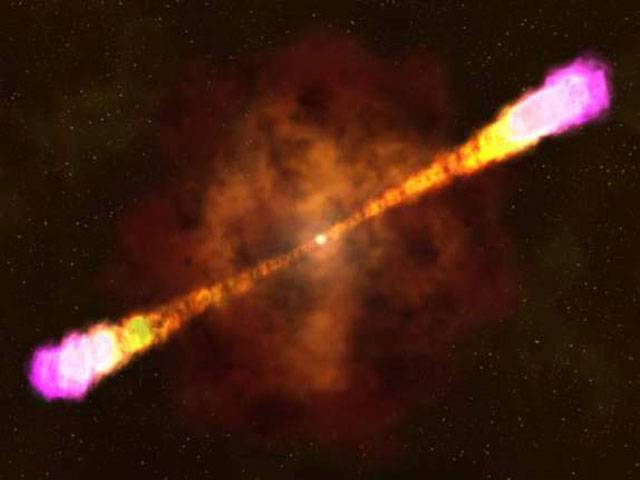SYDNEY-Astronomers from the University of Sydney have identified a “nearby” star system as having the potential to produce a gamma-ray burst, one of the most energetic events in the universe, second only to the big bang.
According to a research published on Tuesday, Aussie scientists along with international colleagues revealed that they have located the rare system just 8,000 light years from earth, the first of its type to be found in our galaxy.
“We knew immediately that we have found something quite exceptional, the luminosity across the spectrum from the radio to the infrared was off the charts,” lead author Dr. Joe Callingham from the Netherlands Institute for Radio Astronomy said.
The system was nicknamed Apep. Two of Apep’s stars are of the Wolf-Rayet variety meaning they are massive and reaching the end of their life.
Those stars could explode into supernovae at any time, and could result in a cataclysmic gamma-ray event combining with the system’s extreme conditions. “The rapid rotation puts Apep into a whole new class,” study co-author Dr. Benjamin Pope from New York University said.
“Normal supernovae are already extreme events but adding rotation to the mix can really throw gasoline on the fire,” Benjamin said.
Scientists said that a gamma-ray burst from one of Apep’s stars would have the capacity to strip the earth of its Ozone layer, while it appears not to be aimed at us at the moment. “Ultimately, we can’t be certain what the future has in store for Apep,” research group leader Professor Tuthillat from University of Sydney said.
“The system might slow down enough so it explodes as a normal supernova rather than a gamma-ray burst. However, in the meantime, it is providing astronomers a ringside seat into beautiful and dangerous physics that we have not seen before in our galaxy,” the group leader said.






